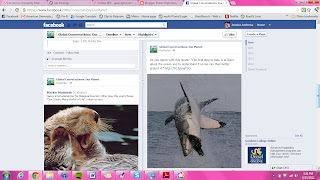Diplomacy is described by Kelley as being a behavior not
just an institution. What he is
discussing is the way that diplomacy has
changed over the years with the increased involvement of non-state actors. This increased involvement has taken the
ability to manage diplomacy out of being strictly a state institution but has
made it more of a dialogue. These non-state actors have created a challenge for
states.
Diplomacy today isn’t just
about what a government acts on but its about the way that governments interact
with non-state actors and with other states.
The game is no longer limited to a few select players but to anyone really. Actors have started taking up certain causes
along side NGO’s and drawing attention to problems that were not a high
priority for states. In many ways
diplomacy has become a kind of business for NGO’s and as a result they are
being shaped by current policy so that they always taking actions that will
support their long term goals. I believe
this is what Kelley means by diplomacy as behavior. Diplomacy has become a component of all
international business and there are now so many actors that it has created new
ways that states handle situations.
These new actors are termed “new diplomats by Kelley. He says “For our
purposes, New Diplomats are mobilised by moral legitimacy supplied by a
collective, stateless will to somehow reorient the ethical foundations of
states, and to change state behaviour in a way that is desirable to the
represented movement.” Essentially the
influence has become multi-directional.
It isn’t just states influencing eachother but now there are NGO’s that
are influencing states.
In terms of public diplomacy I think that this is significant
because it means that it’s going to be harder to get across your message. With states and NGO’s playing in the same
field as well as other New Diplomats there are now a lot of competing
voices. A state’s own NGO’s may being
trying to change a certain behavior and as a result is sending out
contradictory messages abroad. This can
negatively affect the image of the country.
I think there will have to be more energy put into cooperating and
meeting the needs of NGO’s in order for states to have successful public
diplomacy programs abroad. While a state
has a certain legitimacy that an NGO’s don’t have, they also have obtained a
moral authority. The idea that they are
fight for what is right, this can be very powerful especially to the right
audience. In some instances it can be
even more so than the voice of a state.


